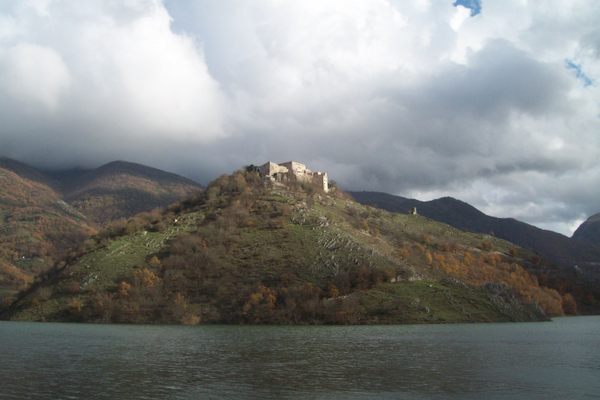About
Albe has an overwhelming amount of history for such a tiny little place.
After the catastrophic earthquake of Marsica in 1915, the area around S. Pietro hill was chosen as a site to accomodate part of the survivors of the tragedy. Some years later, the temporary wooden shacks were converted into anti-seismic buildings and the site became a stable settlement. During WWII the village of Albe was considered a place of strategic relevance for the Nazi forces—field marshall Kesserling placed a battery of anti aircraft guns on the northern terrace of the town and the entire area was occupied.
It was not until 1949 that the village started to unveil its treasures—Pre-Roman structures such as fortifications and walls were already visible, but an archaeological mission led by the Belgian historian Fernand de Visscher brought back to light the amphitheatre, the forum and the commercial district of Alba Fucens, the once glorious and vibrant Roman colony along the Tiburtina Valeria road.
There is still some debate about the foundation of Alba Fucens. The city rose across the contested territory of Marsi and Equi populations, but recent studies are more inclined to ascribe the origin of the oppidum (the early fortified settlement) to the Equi, a strongly militarized population which occupied many territories of central Italy in the early and pre-roman era.
The commercial and strategic relevance of the settlement didn't go unnoticed by Roma, which soon tried to seize the place. After many disastrous and bloody battles, the city fell under Roman rule in 303 BC, and under the consulate of Lucius Genucius and Servius Cornelius, Alba Fucens became one of the most prosperous Latin colonies.
Throughout the centuries the colony always kept a strong bond with Roma, becoming more and more influent. In the early 3rd century BC Alba Fucens sent troops which helped Roma repel a terrific coalition of Etruscans, Umbrians, Samnites and Gauls marching against the capital city, and during the second punic war, 2000 men were sent against the Carthaginian commander Hannibal, who was marching deep into the Italian peninsula, forcing him to retire further southwards in 211 BC.
During the Social Wars of 88-82 BC Alba Fucens showed loyalty to Roma by resisting rebels, and in the Civil Wars of 49-45 BC, the troops of Pompeius allocated in the colony deliberately passed on Caesar's side.
In the Imperial era Alba Fucens flourished greatly and was expanded further. The most important witnesses of that glory are now the ruins of the theatre, the amphiteatre, the forum with the basilica and the thermal complex, still visible and accessible by visitors.
Decadence started to erode the city in 3rd century AD and became an irreversible process in the 6th century. Seismic events, decrease of demographic ratio, collapse of Roman administration and occasional barbaric raids left the settlement unsafe and progressively abandoned. The populace started to rebuild their homes in safer places uphill, and that's where the history of the medieval settlement begins.
The new fortified settlement on the northern S. Nicola hill was consolidated in the 11th century when Saracens raids dangerously increased in central Italy, but under the Lombards rule, the entire area became much safer and the population slowly returned to normal activities. Under King Ludovico II, the place became county of the Marsica until the late 12th century.
In the 13th century, following the events of the Battle of Tagliacozzo between the Anjou and Hohenstaufen dynasties, the place was attacked and destroyed by the french troops led by Charles D'Anjou. With the fall of the Hohenstaufen rule, Albe started to lose importance as political and strategic center of the Marsica, and in the following centuries its territories were constantly contested by the Orsini and Colonna family, swapping ownership from time to time.
Although isolated, neglected and impoverished, the old village of Albe was still inhabited in the 20th century until that morning on 13 january 1915, when the earthquake obliterated the place, leaving nothing but rubbles and taking many lives.
Related Tags
Know Before You Go
Open for free from sunrise to sunset. If you go to the tourist office in the square 100 meters before the parking lot, you can get a free small pamphlet and a guided tour of 1 hour and 45 minutes, prices may vary
Flavors of Italy: Roman Carbonara, Florentine Steak & Venetian Cocktails
Savor local cuisine across Rome, Florence & Venice.
Book NowPublished
March 13, 2013























































